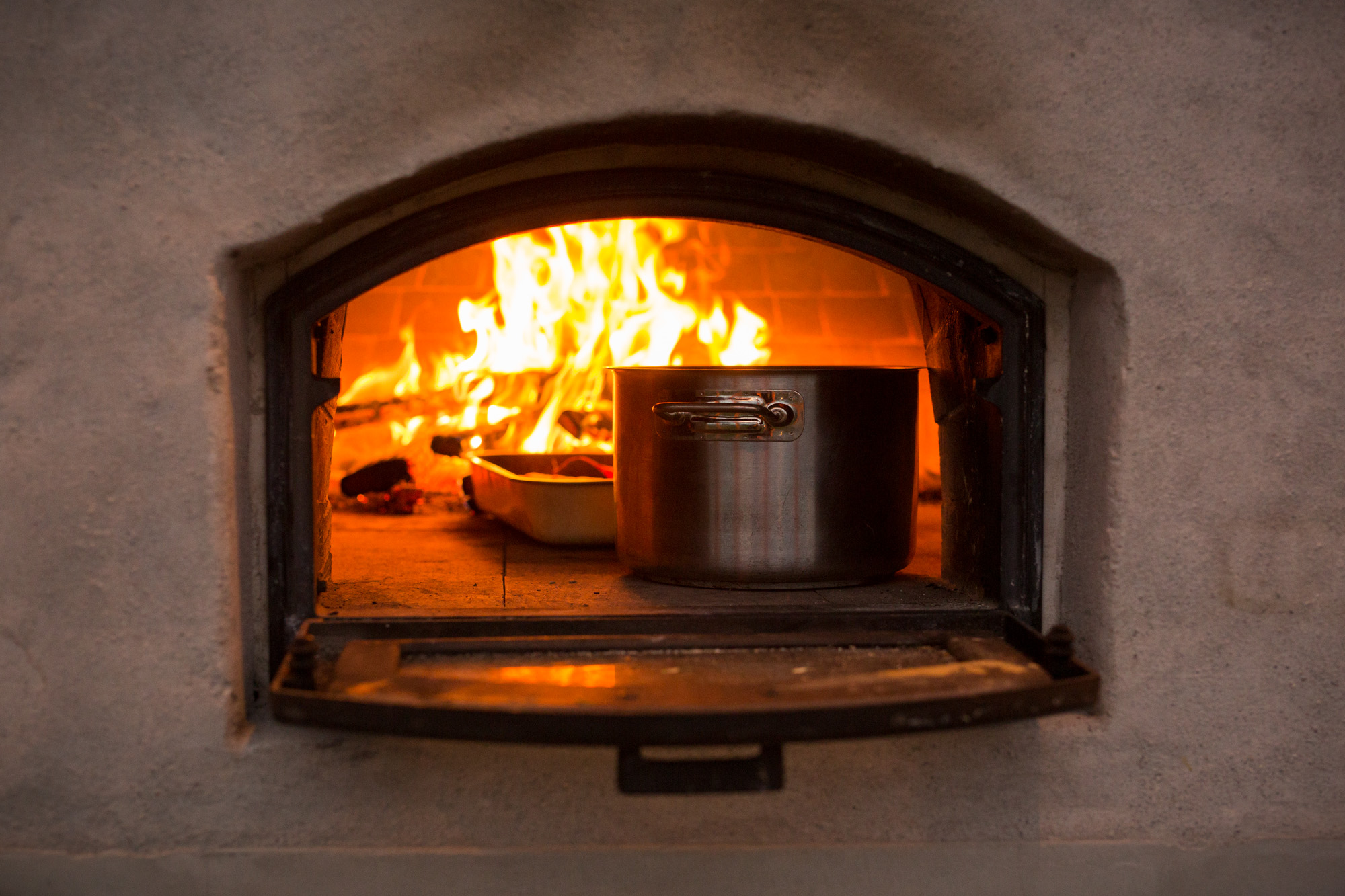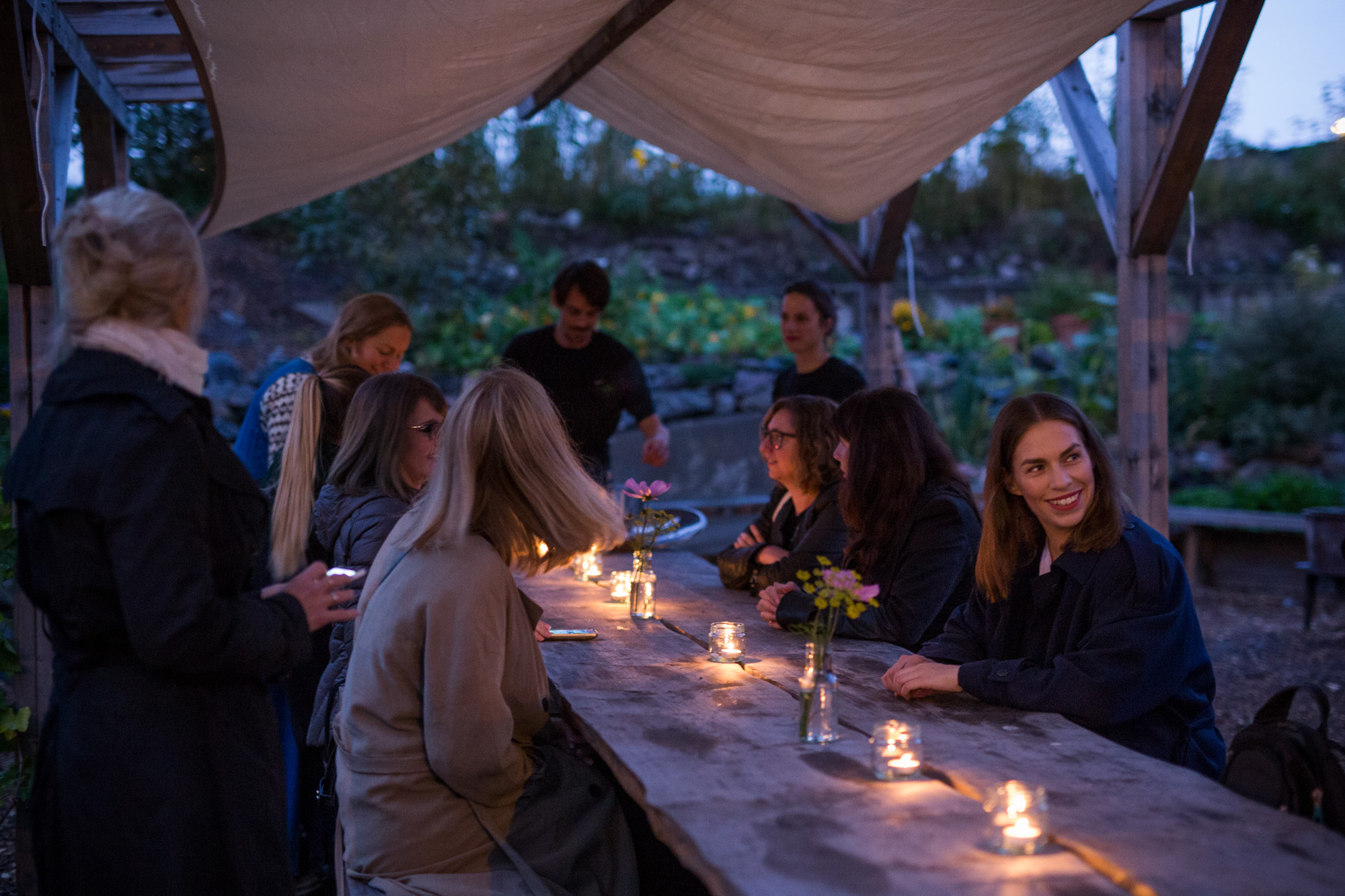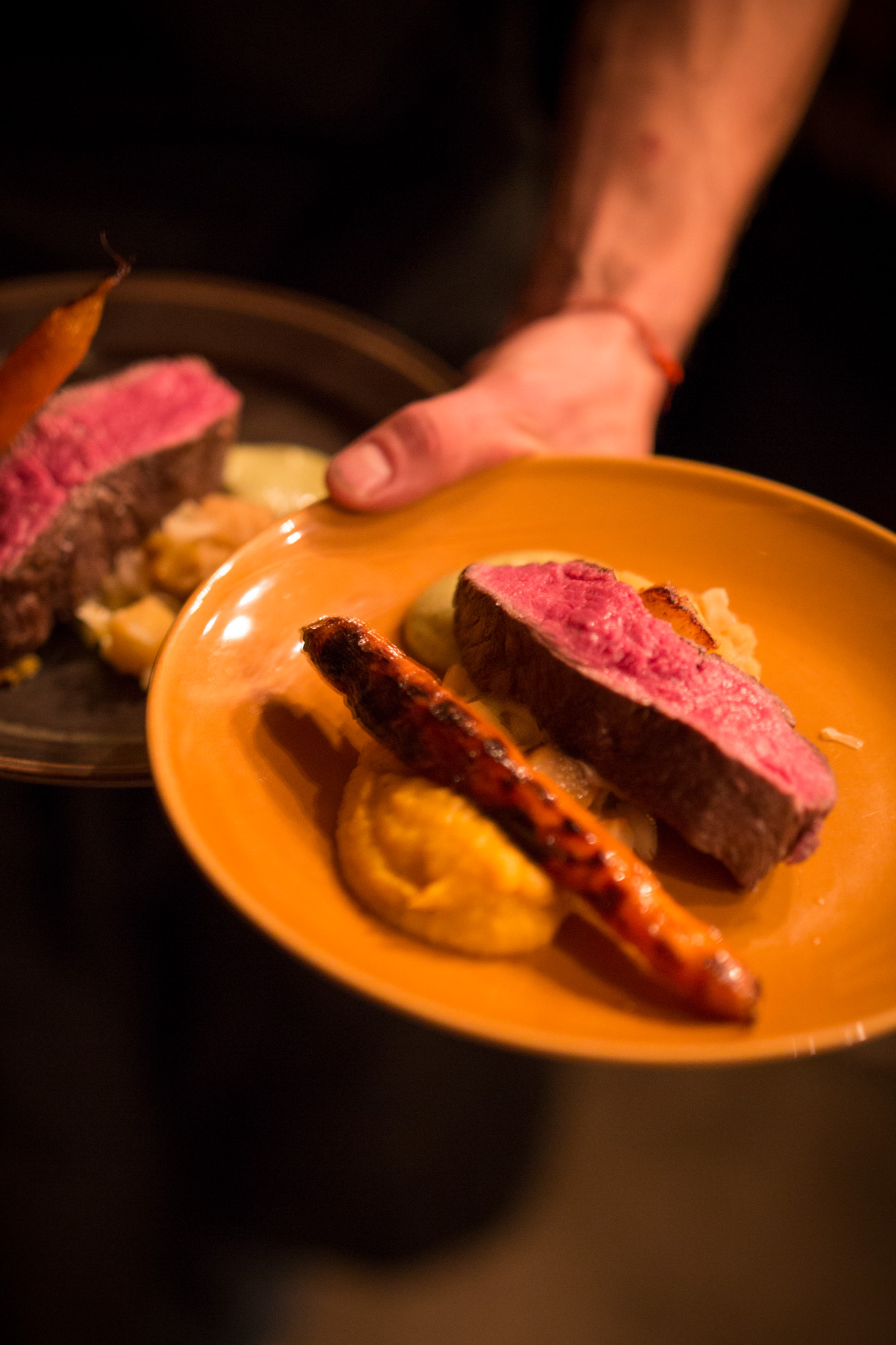Pastevent
The Future of Food
— Oslo Innovation Week
The guests arrived and first gathered outside down by the henhouse, where the chef Magnus Morveto from Food Evolution served a warming bone broth with meat and herbs. Some ate without asking, others more nervously built up the courage to ask, anticipating they were being served obscure insects of some sort.
After a guided tour of the field by Cecilie Dawes, the guests were invited inside to a set table in the bakehouse. Each individual finding their place by looking for their name written on an autumn-coloured leaf.
Magnus soon introduced the meal, explaining how the future of food, to him, is already here. He collaborates with local Norwegian farms and producers to create delicious dishes with a seasonal variety. The menu consisted of a milking-cow, using the whole animal to various dishes. Beans, the protein of the future, in a dish using 7 different beans cooked in 3 ways with spinach emulsion. “Basic vegetables” – with this fermented dish communicating that every single person should be able to pick up a bag of vegetables a week for free. Sourdough bread and green pea hummus – a variation of the classic hummus, using locally available ingredients. Apple crumble with “grains of the future” – buckwheat and amaranth.
Anne Beate Hovind then told us about the bakehouse and how the design by Flatbread Society is inspired by a Norwegian rescue vessel. The vessel is a symbol of how future food is dependent on taking care of diversity and cultural traditions, as well as the skills and knowledge of farmers and bakers.
Innovation is often associated with technological advancements and robotization, and connected with a fear that we as humans cannot keep up with that which we are creating. Within food, innovation then becomes highly dehumanized and denaturalized. We believe there is an alternative to that development, one which we have only seen the start of at Losæter and other community-based initiatives. The rapid growth of community supported agriculture and urban farming in Norway is another example of that.
At Losæter everyone is invited to join wednesday dinners, harvesting, making and dining together in the midst of central Oslo´s perhaps most rapidly developing area. In the future, us humans do not only need the right amount of nutrition, nutritional value increases with food experiences and the processes of making and consuming.
The transformation of Losæter from dead concrete to a fertile field in the midst of a city is one of the most powerful and beautiful examples of possible positive change. By building fertile soil we are actually binding Co2 back into the soil. That´s something to chew on.
Thank you to OIW and to everyone who joined us for this unforgettable evening. To all our wonderful, hardworking and passionate partners: Losæterforeninga, Janne and Linda at Hengsenga at Bygdøy who provided the gorgeous apples, Fokhol gård for providing meat and vegetables to Food Evolution, Herbanists for the herbs for the water and for giving us a helping hand during preparations.
Words by Rita Paltiel and Cecilie Dawes
Photography by Jo Straube


















